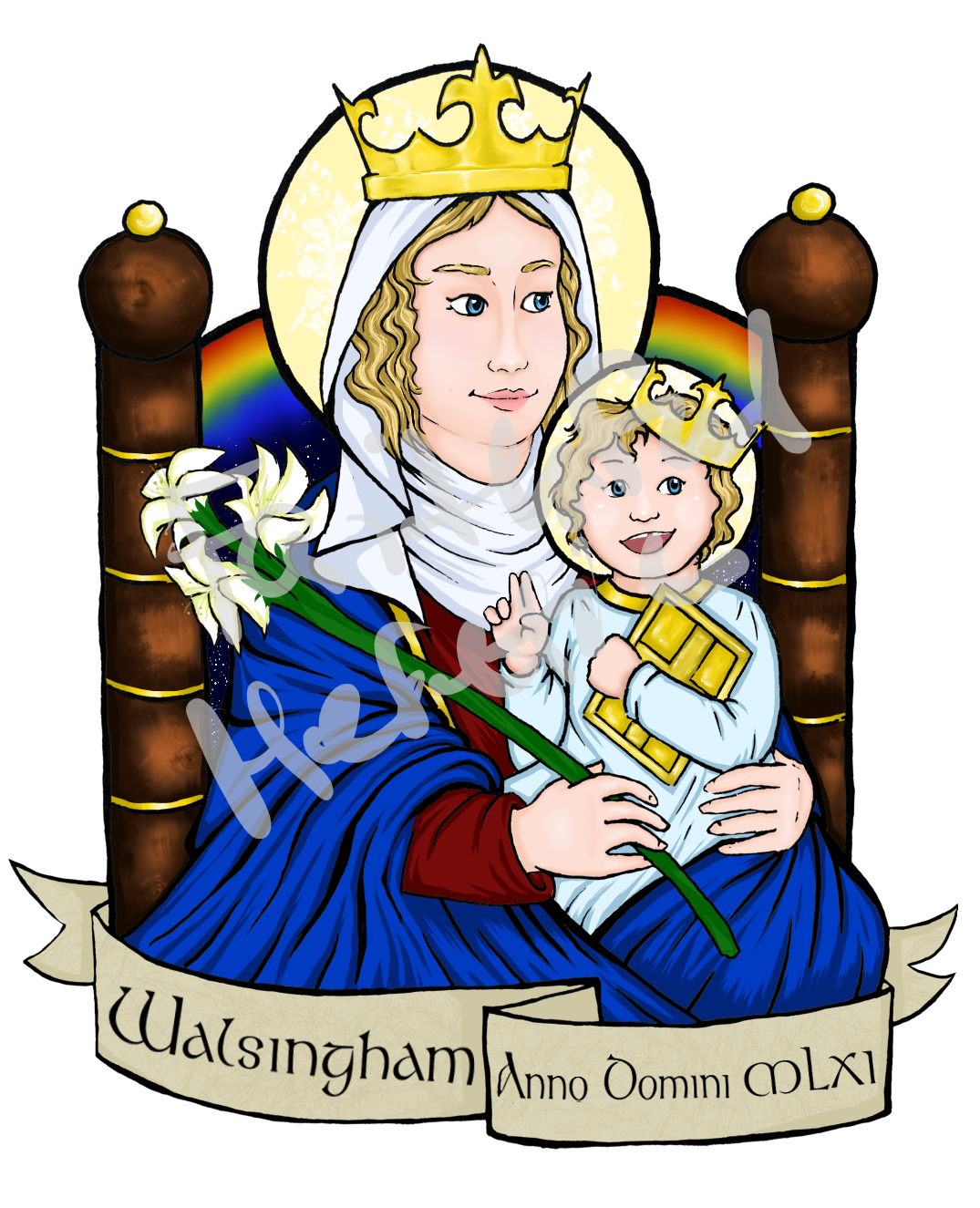Our Lady of Walsingham
Norfolk, England
Feast Day: September 24

Background:
Our Lady of Walsingham, traditionally dated to the year 1061, is one of the oldest recorded Marian apparitions. Following a series of ecstatic visions, a noblewoman named Richeldis de Faverches established a shrine to Mary which became a popular pilgrimage site until its destruction during the English Reformation. In spite of the (often brutal) suppression of "papist" practices including the veneration of Mary and the saints, popular devotion to the apparition and the shrine were never fully extinguished, and sympathetic parties kept her memory alive. Finally, in the early 20th century, her shrine was restored. In modern times Anglicans, Catholics, and Orthodox Christians all maintain shrines to Our Lady, receive pilgrims, and preserve the history behind the legend.
This icon is a bit of an unusual choice for me. Our Lady of Walsingham is considered somewhat "trad," and I've always had a complicated relationship with "traditional femininity." I often find it hard to appreciate Marian theologies. But, as someone who appreciates medieval history, I eventually came to understand what Our Lady of Walsingham might have meant to her original devotees. It was an especially positive pilgrimage for women, and it was said that anyone who approached Mary at this shrine would not leave empty-handed. She appears as the Queen of Heaven, so much higher than any earthly royalty, and in an era that could sometimes be very harsh and chaotic I can imagine the peace that such a devotion might bring. I also came to appreciate the sheer stubbornness of the people who continued to venerate the apparition after such practices had been suppressed in England, and for this, Our Lady of Walsingham takes her place among the "faithful heretics."
Iconography
- Our Lady appears as the Queen of Heaven, enthroned by a rainbow and starry night sky.
- The lily scepter is traditionally said to represent sovereignty and virginity.
- The child Jesus appears happy and playful in this icon.